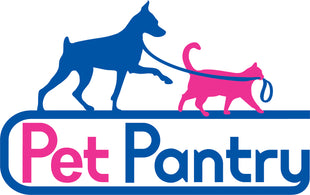Dietary fiber is the non-digestible portion of a food that contributes to digestive health and stool quality. Dietary fiber in pet food can have various beneficial effects on your pet, depending on their needs.
Types of Fiber
There are two different types of fiber, soluble and insoluble.
Soluble fiber dissolves in water to form a gel-like substance. Some examples of foods rich in soluble fiber include oats, barley, peas, psyllium, apples, and carrots. Soluble fibers are often fermentable which means that bacteria in the gut can use it as a source of energy. This helps to promote healthy gut immune function by supporting the growth of good bacteria (probiotics).
Insoluble fiber helps with the movement of material through the digestive system to help promote regularity. Insoluble fiber can also aid in the prevention of hairballs in cats. Excellent sources of insoluble fiber include whole wheat flour, wheat bran, potatoes, and nuts.
The Benefits of Fiber
Weight Loss
Although not digestible, fiber has many benefits in pet food. For weight loss diets, increased fiber can help promote satiety and decrease caloric density. Fiber is ‘bulky’, so it may help pets feel fuller for longer, making them less likely to beg for more food. Weight loss diets that include higher levels of fiber allow for the same volume to be fed compared to a regular diet, but fewer calories help to promote weight loss.
Some grains, such as barley and oats, contain a special type of soluble fiber called beta-glucan, which has been shown in numerous human studies to fight heart disease and diabetes. Beta-glucan may also be beneficial for pets to control blood glucose and prevent obesity.1
Digestive Aid
Both soluble and insoluble fiber are used in the treatment of digestive disorders such as constipation and diarrhea. Both the amount and type of fiber can affect the outcome. For example, for constipation, some pets respond to a reduced fiber diet while others respond better to increased fiber. Because each animal (and their gastrointestinal microbes) may react differently, trial and error is often necessary to determine the fiber needs of each individual pet. Trying diets with different fiber levels and fiber sources may be necessary to find the one that works best.
Reference
-
de Godoy MR, Kerr KR, Fahey GC, Jr. Alternative dietary fiber sources in companion animal nutrition. Nutrients. 2013;5(8):3099-3117.
________________________________________________________________
AUTHOR
BY: MICHELE DIXON
Michele, Health and Nutrition Specialist at Petcurean, studied animal nutrition through Colorado State University and the Companion Animal Sciences Institute. Involved in animals and nutrition for over 25 years, Michele had the pleasure of receiving a High in Trial with her first Borzoi Yascha at an early age.


